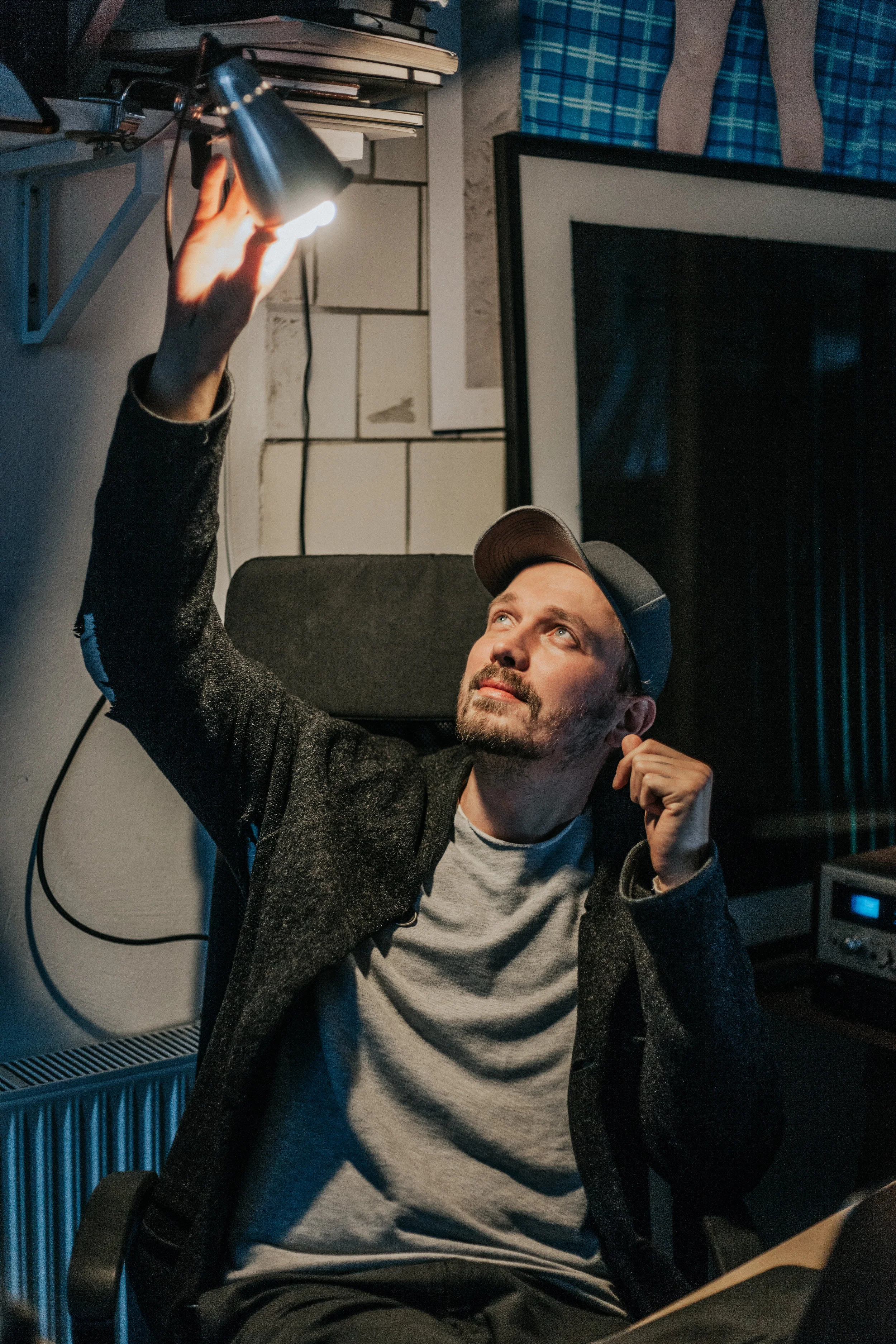Does accidental fame exist?

Tadas Černiauskas [Ta:dəs T∫erniauskəs] is an internationally known artist and photographer who has featured in galleries all over the world: New York, San Diego, Berlin, Rome, just to name a few. His studio loft is in a particularly trendy corner of town, surrounded by industrial buildings and coffee roasteries. Tadas’ journey is a weird one. He’s a total overnight success - one morning he woke up and the whole world (or everyone with an internet connection) knew his work. Yet, apparently there’s much more to it than luck.
YOU’RE A REALLY SIMPLE GUY FROM A SMALL TOWN IN LITHUANIA CALLED ŠIAULIAI. TELL US WHAT YOUR CHILDHOOD AND TEENAGE YEARS LOOKED LIKE?
I think it was fairly standard. It’s really weird, but back in school I was an extrovert, the class prefect and the school president. Just like most kids, I had issues. For example, I didn’t study, because it was quite boring. However, I somehow passed my exams and got to uni. That was it. I guess everyone from a really small place feels the same - you do the stuff you’re supposed to do while growing up and then, when you leave school, the real adventure begins.
SO, AN ORDINARY GUY FROM ŠIAULIAI IS NOW A VERY WELL KNOWN ARTIST. HOW DID THAT TURN AROUND?
To be known is something similar to having money: to some a hundred euros is a big deal, for others a million euros is nothing. When people tell me how famous I am, I usually like to differ, because it all depends on who you compare to. Of course, I’m not saying I’m not happy about all those publications, art shows, interviews or collaborations with various labels. This experience has been really nice, but when you give an interview to a paper like the New York Times, the next day you realise that the same spot, in the same paper will be headlined by someone else tomorrow. It keeps going for 360 days for many, many years. So you understand that, yeah, it’s great, but very soon you will be forgotten, and that’s that.
Also, everything depends on the goals you create for yourself. Unfortunately, I raise my bar very high; I don’t hold my achievements of today as victories. It’s just one step out of many. I don’t walk around with my head held high, I actually am frequently disappointed. On my last trip to New York, I presented my work at a gallery and was completely unsatisfied with it. I actually wouldn’t tell people I had an exhibition opened in New York because while walking through galleries, I saw that I wasn’t where I wanted to be yet.
You can read the full article in -What do people do? magazine, order at our online shop.
WORDS: RASA JUSIONYTĖ
PHOTOS: DEIMANTĖ RUDŽINSKAITĖ







